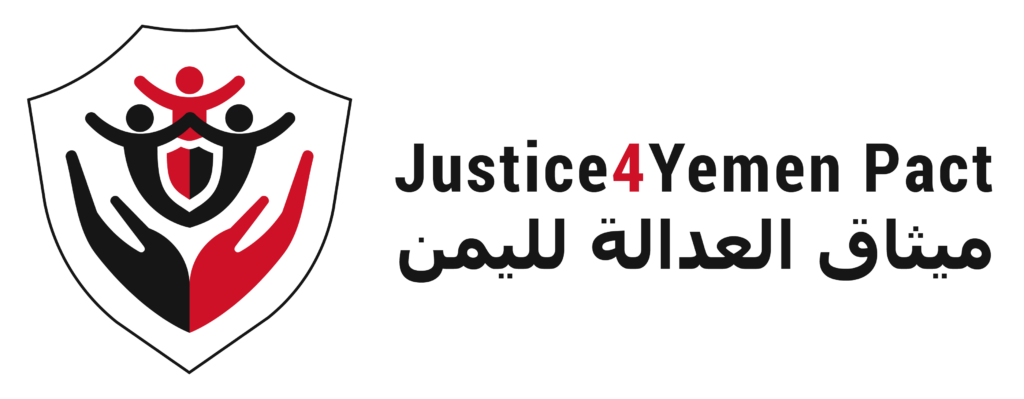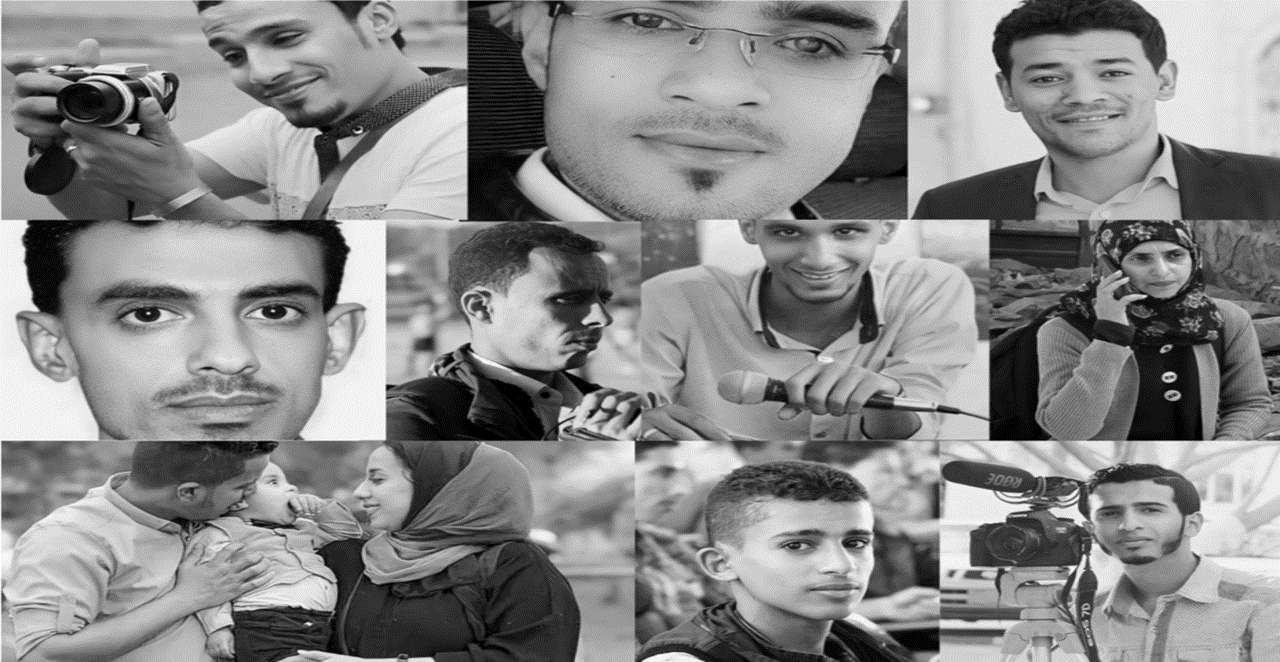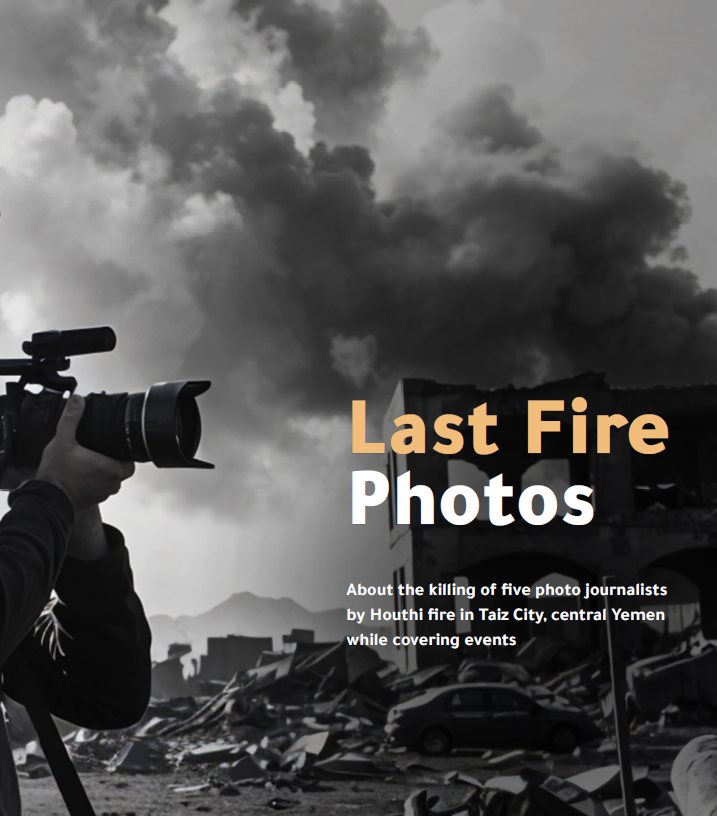Free Media Organization for Investigative Journalism seeks to enhance the methodology of investigative work to create a new future for Yemeni journalists. Free Media’s mission is to contribute to a free and enabling environment for journalists, activists, media professionals, and anyone in Yemen with something to say. Freedom of Expression and Opinion is a basic human right, and Free Media uses “careful journalism” based on research, interviews, and field work to serve the public interest and reduce reliance on opinion-based articles and analysis. Find more about Free Media here.
As part of Free Media’s work documenting human rights violations, they have published five short stories about Yemeni journalists who believed in the power of a free and independent media and paid the price with their lives. Read their stories below and join the Justice 4 Yemen Pact coalition in calling for justice and accountability for perpetrators who target journalists, human rights defenders, and activists in Yemen.
Story 1: Explosive device kills pregnant journalist Rasha Khaled Al-Harazi

When: November 9, 2021
Where: Aden Governorate
Who: Houthis
Journalist Mahmoud Al-Atmi recalls the day his wife and son, who had not yet seen the light, were killed, ” On November 9, 2021, while I was with my wife, journalist Rasha Al-Harazi, in Aden governorate, my car exploded by an explosive device that was attached to the bottom.” Rasha Al-Harazi, who was about to give birth was, that day on her way to a hospital in the interim capital of Aden, which is controlled by the internationally recognized government. On the way, an explosive device planted under the car exploded, Rasha died instantly, and because of the strength of the explosion, the remains of the fetus were mixed with those of his mother. Mahmoud Al-Atmi was seriously injured and was taken to intensive care.
Al-Atmi was working with a group of journalists in Hodeidah governorate in western Yemen. When the Houthis stormed the coastal governorate, they tried to attract some journalists to work for them, but they failed. When the Houthis started arresting some of them, a number of journalists managed to leave the city, Mahmoud Al-Atmi and his wife Rasha Al-Harazi were among the departures.
Before they were targeted with an explosive device, Rasha Al-Harazi worked for a number of local and international organizations and was a journalist for the 30 platforms, while Mahmoud Al-Atmi worked as a collaborator with Al-Arabiya and Al-Hadath channels. (Read the full story here)
Story 2: Photojournalist Mohammed Ghalib al-Qadasi targeted with a missile
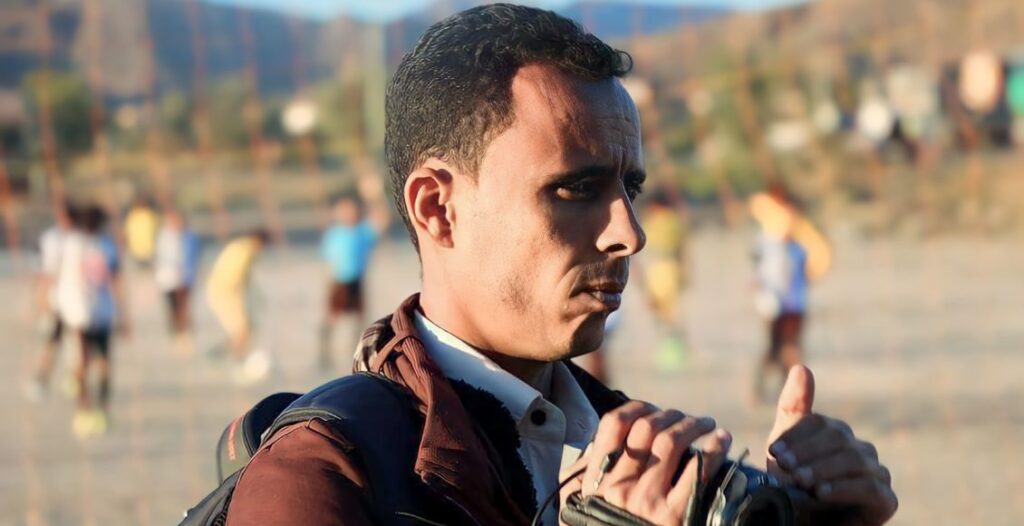
When: January 22, 20218
Where: Taiz Governorate
Who: Houthis
Mohammed Al -Qadasi managed to document the remains of the victims of the missile shelling launched by the Houthi group in early 2018, but Al -Qadasi himself and before providing his colleagues – who work in foreign and local media- with the video, was converted into charred remains with another shelling after hours.
This happened on January 22, 2018, while Mohammed Ghalib Al -Qadasi, 30, was in Al -Khayami district, Al -Maafer area, south of Taiz Governorate, to perform a press mission. In addition to his job as a photographer of a local channel, Al -Qadasi was providing workers in foreign and local media with the materials he collected here and there.
On that day, Al -Qadasi, was accompanied by Belqees Chanel reporter Fawaz Al Hammadi , to cover a festival held by the Special Security Forces on the occasion of the graduation of a new batch of its affiliates, but the sound of explosions ended the event and separated the celebrations, as Al -Hammadi confirms in his testimony to the Free Media Center for Investigative Press:
“We heard a loud explosion near the place of the festival “, after that, the rest of the celebration was canceled, the soldiers spread out and the guests dispersed: “When we left the institute, we heard screams and a distress call from citizens in the village next to the technical institute. People were talking about rockets falling on the village, killing and wounding a number of innocent civilians.”
With the end of the military festival of the government-affiliated forces, the intensive bombardment launched by the Houthi group on the area finished. After that photographers Mohammed Al-Qadasi and Fawaz Al-Hammadi set out to document the massacre of a number of innocent civilians who were sitting in front of their house in the village: “We found the remains of the dead victims.” Al-Hammadi said, “The rocket fell directly on them. The scene was very shocking.”
Journalist Mohammed Maresh, who was on his way to the area from Aden, learned of the news of the massacre from Bashir Aqlan, the former reporter of Russia Today. Then Maresh communicated with Mohammed Al -Qadasi to get materials to provided to Reuters, according to his testimony, which we documented at the Free Media Center. Al -Qadasi told him that he left the memory disk with one of the guards of the Technical Institute gate, and asked him to wait there near the institute.
Mohammed Al-Qadasi came and went to fetch the memory from the gate, says Marsh: «In the meantime we heard a sound of whistling and a big explosion, the car flew up and came back, the place was filled with dust and smoke, I did not know what happened, I tried to get down through the door it did not open, a concrete pillar entered through the car window» After that, Maresh adds: «We saw Bashir with blood coming out of his ears. It was a tragedy.” (Read the full story here)
Story 3: Shell kills three journalists in Taiz – Taqi al-Din Mohammed al-Huthaifi, Wael Mohammed al-Absi, Saad al-Nadhari

When: May 26, 2017
Where: Taiz Governorate
Who: Houthis
On the morning of Friday, May 26, 2017, six collaborators with local and foreign media went to cover the battles between the army of the internationally recognized government and the Houthi group, east of Taiz city, but a shell coming from the Houthis area killed three of them: Taqi Al-Din Al-Huthaifi, Wael Al-Absi, and Saad Al-Nadhari, while the other three were wounded.
At Free Media Center, we documented the details of the incident as stated by the wounded, an eyewitness “his leg was amputated”, Salah Al-Wahbani “his hand nerves were torn apart” and Osaid Al-Odaini, “his injury was light.”
Saad Al-Nadhari had been wounded shortly before them, shrapnels from a shell penetrated his stomach, he kept bleeding, because the ambulance was unable to enter the place where Al-Nadhari was so he died. Soon after, another shell fell on his other five colleagues.
“We had a camera that documented the incident itself, filmed the shell, filmed when the paramedics brought him to the hospital , and these footage was circulated in most channels,” says an eyewitness, who worked as a cameraman with the government’s Aden satellite channel, adding: “The nature of our work, is filming and documenting what is happening in the city of Taiz, whether on the frontlines, or humanitarian stories in the displacement camps.” (Read the full story here)
Story 4: Camera documents the kill of photojournalist Ahmed Abdullatfi al-Shaibani
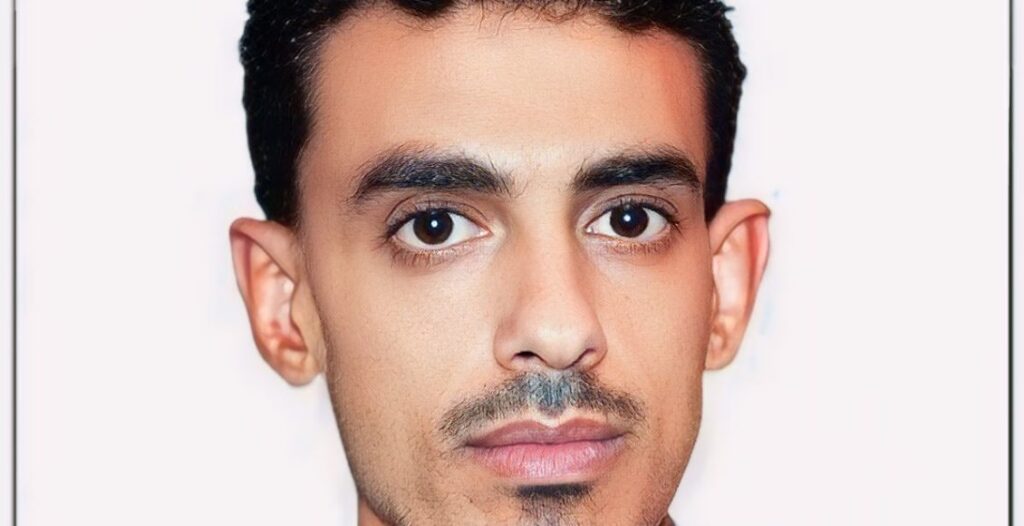
When: February 16, 2016
Where: Taiz Governorate
Who: Houthis
In his first press coverage with the channel that hired him, the cameraman Ahmed Al-Shaibani himself was the video material. After he was captured by the lens of one of his colleagues falling dead in the middle of the street by Houthi snipers, on February 16, 2016.
Ahmed Abdullatif Al-Shaibani, 30, was contracted with the internationally recognized government’s Yemen satellite channel, and in February 2016 he went with a group of male and female journalists to cover the armed clashes that were taking place between the popular resistance forces backed by the government’s army and the gunmen of the Houthi group “Ansar Allah”, in Al-Hasseb area, west of Taiz city.
Free Media Center for Investigative Journalism, documented testimonies of the journalists who went to cover the battles along with Al -Shaibani. When they arrived, Ahmed Al -Bokari confirmed: “Colleague Abdulaziz Al -Thubhani and us were targeted by the sniper centered on Rabbits Hill”
“Rabbits” is a hill located west of the city of Taiz, overlooking Al-Hasseb Street. In 2016 the Houthis were stationed there in addition to their position on high buildings overlooking the Muroor Street, specifically the place from which the passers-by cross the street to the safe side.
After covering the clashes and the fire that broke out in one of Hazza Taha’s factories in the same area, journalist Afaq Al-Haj says: “We had to cross the street to get to the other side and leave the area safely.”
Journalists Ahmed Al-Bokari and Abdulaziz Al-Thubhani first crossed the place to the opposite side , while Journalists Ahmed Al-Bokari and Abdulaziz Al-Thubhani first crossed the place to the opposite side , while Ahmed Al-Shaibani, along with journalists Afaq Al-Haj and Naaem Khaled, were preparing to cross fast. Al-Thubhani said: “I thought of documenting the presence of female journalists, a great scene and a powerful picture of the reality of the Yemeni media and the struggle of Yemeni women journalists at this time.”
As they were crossing the street, Afaq says: “I heard a colleague screaming Ahmed… Ahmed…. I didn’t know what happened?” she adds: “After crossing to the other side, I turned and saw him – Ahmed Al-Shaibani- was lying on the ground with blood coming from his head.”
The Houthi militia shot him with two direct bullets in the head, causing him falling a martyr,” said Al-Thubhani, who captured the scene of Al-Shaibani’s sniping. His colleague Al-Bokari confirmed: “The sound of a sniper’s bullet penetrating the head of colleague Ahmed Al-Shaibani is still ringing in my ears until today.” (Read the full story here)
Story 5: A sniper’s bullet scatters the body of food aid activist Riham Abdulwase Badr in Taiz
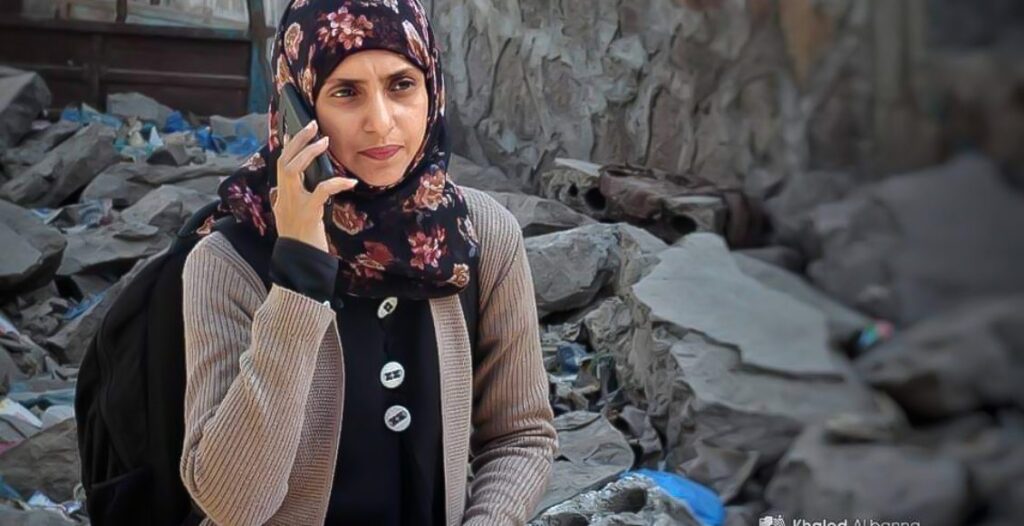
When: February 8, 2018
Where: Taiz Governorate
Who: Houthis
On this day, February 8, 2018, Riham Abdulwase Badr, 32, a social human rights activist and societal journalist, adopted a courageous initiative with a group of youth volunteers , to break the siege on a group of residents east of the city of Taiz, and to provide them with food aids.
In fact, the residents of Ab’ar, Al-Sarmin and Al-Krifat areas east of Taiz city were besieged, after the intensification of armed battles between the army forces of the internationally recognized government and the militants of the Houthi group “Ansar Allah”. As a result, the local people were unable to get the essential things of life, food and water.
Al-Badr and her accompanying team did managed to break the siege, and after distributing the aids, the team did not return to the city as a whole , for two of them were killed on the way, including Riham Al-Badr.
According to the interviews we conducted, with eyewitnesses or activists who accompanied Riham, in the food aid convoy intended for the besieged people , Riham and her five-members team arrived at Sala Palace, east of the city at nine o’clock in the morning. The situation was stable, so Riham decided to go through the only road connected to the besieged areas, at the course of the floods in Ab’ar area. The team was subjected to an abnormal shooting from the position of the Ansar Allah group (Houthis).
Ahmed Othman, the only one of the team who was not hit by a gunshot, said: “We were a group of activists, human rights defenders and media professionals, our work in the humanitarian field is clear, we do not have weapons, and Riham Al-Badr was clearly a woman through her dress and clothes. Things were very clear to the Houthi fighters deployed in the high areas overlooking the road we took.”
The Houthis fired heavily on Riham and her team, forcing them to enter the course of the floods for shelter. After the sound of gunfire was quiet , the team was able to reach the residents and distribute aids, after that, Riham decided to return to the city,Ahmed Othman confirms: «We were walking on the way back, the situation was completely calm, there was no shooting, we walked while my colleagues Riham Al-Badr, Moamen Saeed and I were talking, suddenly a 7.12 caliber bullet blew Momen’s head into pieces. A second shot hit his hand, both hands damaged in the second shot. Because of fear and horrible situation I found myself lying on the ground, and when Riham tried to do first aid for colleague Moamen Saeed, a gunshot penetrated her abdomen and the intestines came out. The shot also amputated two fingers from her left hand. I could not do anything for them, I tried to crawl towards them, but a shot came the wall and shrapnel flew in the air, the sniper was shooting at us continuously, preventing any attempts to save us» (Read the full story here)
Story 6: The Mysterious Death of Journalist Fawaz Al-Wafi: Unveiling the Truth
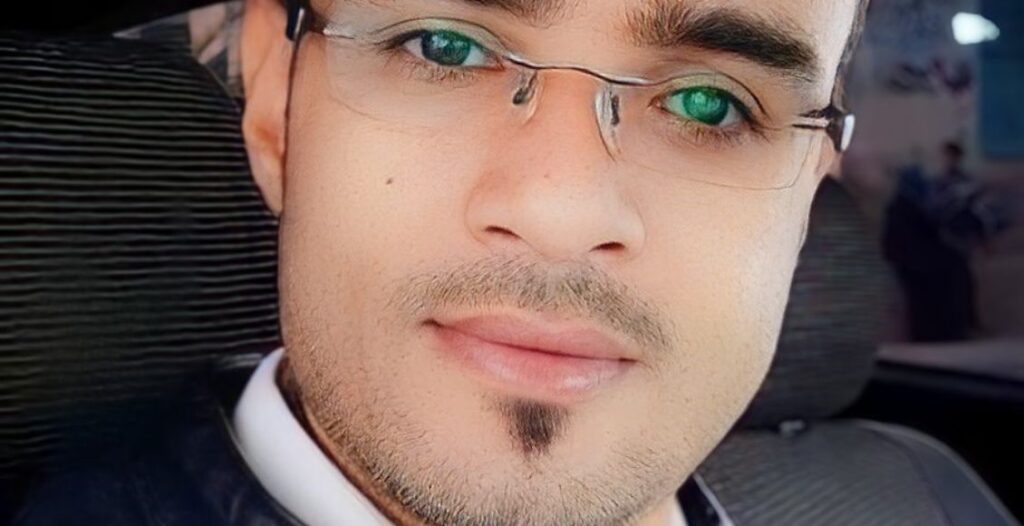
When: March 22, 2022
Where: Taiz
Who: Unknown
Before his death, journalist Fawaz Al-Wafi, 39, was active in Taiz governorate under the Yemeni government’s control. Al-Wafi, involved with a group providing anonymous humanitarian aid, uncovered a network of antiquities smuggling and money laundering, leading to a dispute with the activists.
On March 22, 2022, he was found dead in his car with signs of torture. Surveillance footage tracked his car’s movements from his home to where it disappeared and reappeared with his body.
Despite identifying suspects and motives, the police couldn’t link them to the evidence. Investigations indicated his murder was tied to his professional activities and the aid group. The court ordered further investigation, but the prosecution cleared some suspects despite evidence and focused on an intelligence officer, Hisham Ali Mohammed.
The Free Media Center for Investigative Journalism reviewed the case, interviewing sources and analyzing a 700-page judicial file. They concluded Al-Wafi’s murder was organized and professionally executed. They criticized the Public Prosecution for not pursuing telecom records that could identify the real perpetrators.
The Free Media Center urges journalists, activists, and human rights organizations to advocate for justice for Yemeni journalists and activists facing violations.
To read Full Story here.
Story 7: Caught in the Crossfire: The Fatal Shooting of Journalist Mohammed Qasim Al-
Taheri in Taiz

When: September 2, 2018
Where: Taiz
Who: Armed factions affiliated with the internationally recognized Government
Citizen journalist Mohammed Qasim Al-Taheri was fatally shot by a sniper while preparing to transport a sick woman and her husband in Taiz. Al-Taheri was involved in humanitarian efforts and documented clashes between Yemeni government forces and the Houthi group. His death occurred during armed confrontations near Al-Mudhaffar Hospital on September 2, 2018.
Witness testimonies suggest the sniper’s shot came from elevated positions near Cairo Castle and Al-Dairy Street. Forensic analysis indicated the bullet entered from the right side of his neck and exited through his left cheek.
Despite calls for investigation, the Public Prosecution did not pursue the case, and Al-Taheri was buried without an autopsy or medical report. The Free Media Center for Investigative Journalism urges action from journalists, activists, and human rights organizations to seek justice for Al-Taheri and others affected by violence in Yemen.
Read Full Story here.
Story 8: Voices Silenced: The Murder of Civil Activist Amjad Abdurrahman and the
Struggle for Justice
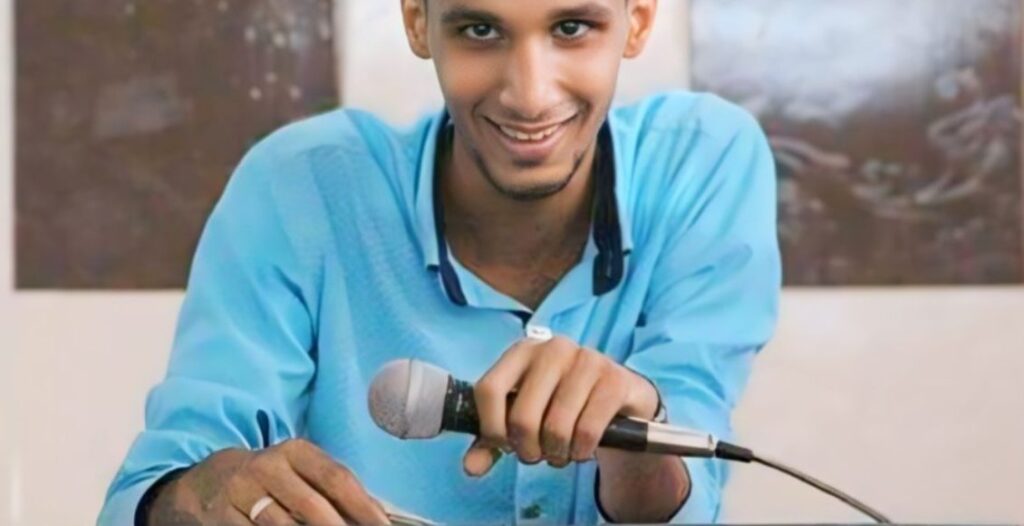
When: May 14 , 2017
Where: Aden
Who: Security Belt/Camp Twenty
Amjad Abdurrahman, a prominent civil activist in Aden, was targeted and killed on May 14, 2017, amidst rising tensions and conflict in the city. Known for his involvement in cultural and civil society initiatives, Amjad opposed the demolition of an ancient mosque, which brought him into conflict with local armed groups.
Before his death, Amjad and his colleagues protested against the mosque’s demolition, leading to threats and harassment from local security forces. On the day of his murder, he was shot multiple times in a targeted attack outside an internet café in Sheikh Othman, Aden. Witnesses reported the assailant wore civilian clothes and fled the scene on a motorcycle.
After his death, attempts to honor Amjad were obstructed by accusations from his killers, who labeled him as a secularist promoting atheism and immorality. The local police, allegedly influenced by the same armed groups, did not investigate effectively.
Following the incident, journalists and activists who sought justice for Amjad faced harassment and torture at the hands of security forces linked to Emam Al-Nubi’s camp. Despite international attention and pressure, those responsible for Amjad’s murder have not been held accountable.
Amjad’s death underscores the dangerous environment for activists in Yemen, where political agendas intertwine with violence, and justice remains elusive for victims of targeted killings.
Read Full Story here.
Story 9: Unveiling Corruption: Mohammed Al-Absi’s Final Investigation and Unresolved
Death
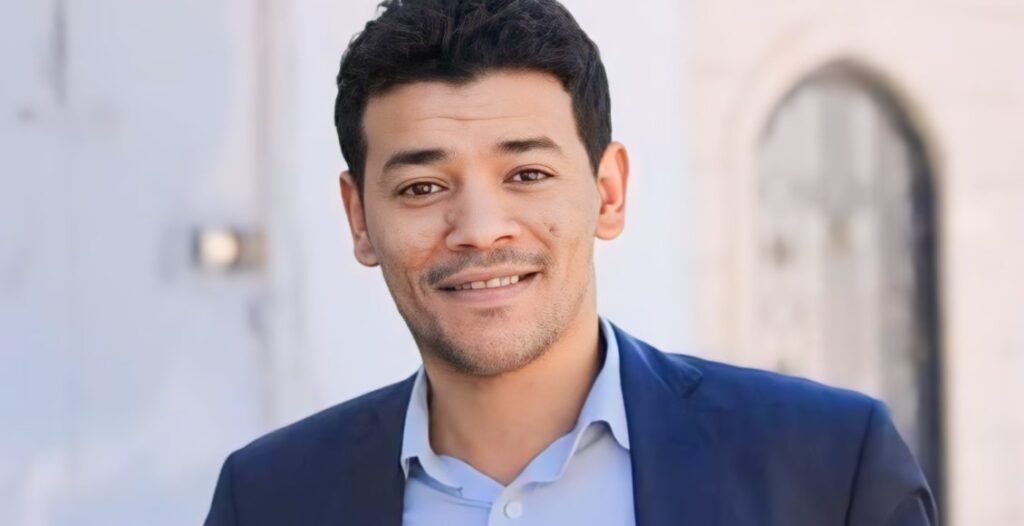
When: December 20, 2016
Where: Sana’a
Who: Unknown
Journalist Mohammed Abdo Al-Absi dedicated his career to exposing corruption within Yemen’s oil sector, particularly during the regime of former President Ali Saleh and after the Houthi group seized control in 2014. His investigations uncovered illicit deals and smuggling involving influential figures and foreign companies, earning him the enmity of powerful interests.
Al-Absi faced intimidation tactics such as vandalism of his car and surveillance before his tragic death on December 20, 2016, in Sana’a. Despite efforts to silence him, he continued his investigative work, focusing on corruption networks linked to the Houthi group. His death, marked by unusual symptoms and suspicions of foul play, was initially attributed to natural causes but later revealed to be the result of a chemical compound that metabolized into lethal levels of carbon monoxide.
The Houthi-controlled authorities in Sana’a failed to conduct a thorough investigation, prompting skepticism and calls for justice from Al-Absi’s family, colleagues, and human rights advocates. The case remains unresolved, underscoring the dangers faced by journalists exposing corruption and injustice in conflict zones.
Read Full Story here.
Story 10: Justice for Nabil Al-Quaiti: A Call for Accountability
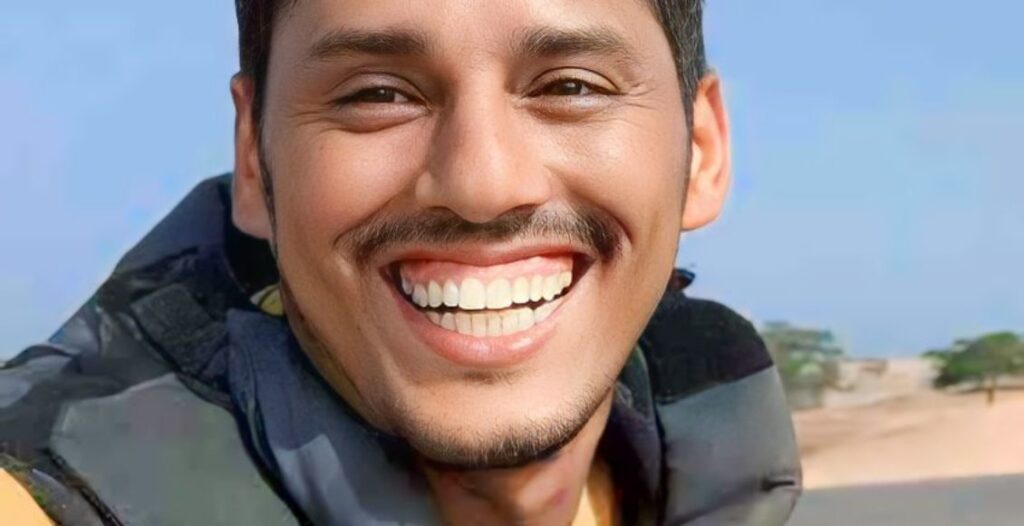
When: June 2, 2020
Where: Dar Saad, Aden, Yemen
Who: Unknown
Yemeni photojournalist Nabil Al-Quaiti was assassinated in Aden by unknown gunmen. Known for his fearless coverage of Yemen’s conflicts and his humanitarian efforts, Nabil documented the struggles of his people, earning international recognition, including the Rory Peck International Journalism Award in 2016.
Nabil was a vital support for his family, which was left devastated by his murder. Despite security officials announcing the arrests of suspects, three years have passed without a single trial. His family continues to demand justice, decrying the lack of action by Yemeni authorities and calling for international intervention to hold the perpetrators accountable. The case of Nabil Al-Quaiti reflects the urgent need for accountability and press freedom in Yemen. It is time to end impunity and ensure that justice is served.
Read Full story here
Story 11: Journalist Sabir Al-Haydari Silenced by an Explosive Device
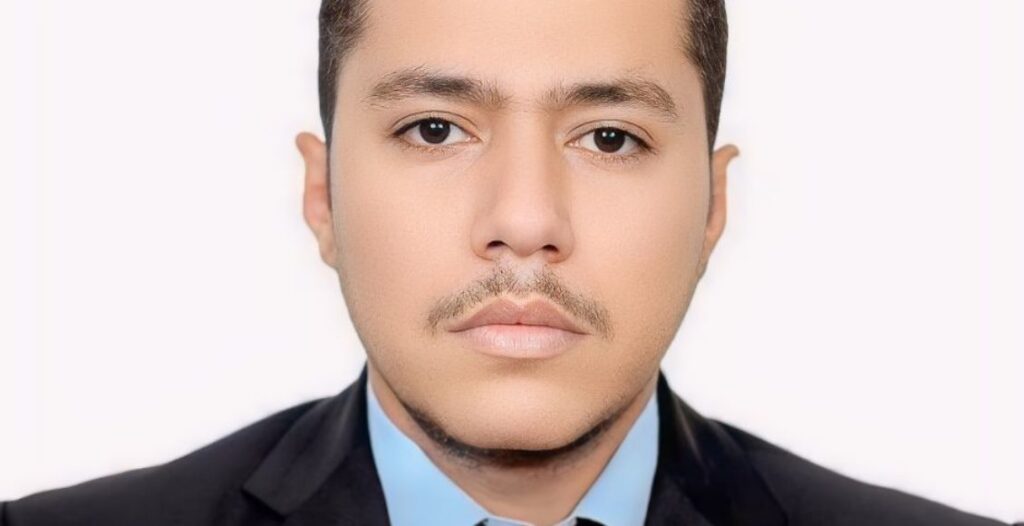
When: April 15, 2022
Where: Aden, Yemen
Who: Unknown
Journalist Sabir Al-Haydari was killed in Aden when an explosive device planted in his car detonated. Colleagues believe the attack was orchestrated by a Houthi cell tracking his movements due to his critical reporting on the group’s actions, including aid diversion to battlefronts.
Al-Haydari had a distinguished career in journalism and was known for his investigative work, which exposed corruption and violations. His assassination follows a series of targeted attacks against journalists from Hodeidah who had relocated to Aden to escape Houthi threats. Months earlier, another journalist, Mahmoud Al-Otmi, and his wife were similarly targeted. These attacks highlight the severe threats facing Yemeni journalists. The Free Media Center calls for global advocacy to hold perpetrators accountable and to protect the freedom of the press in Yemen.
Read Full story here

